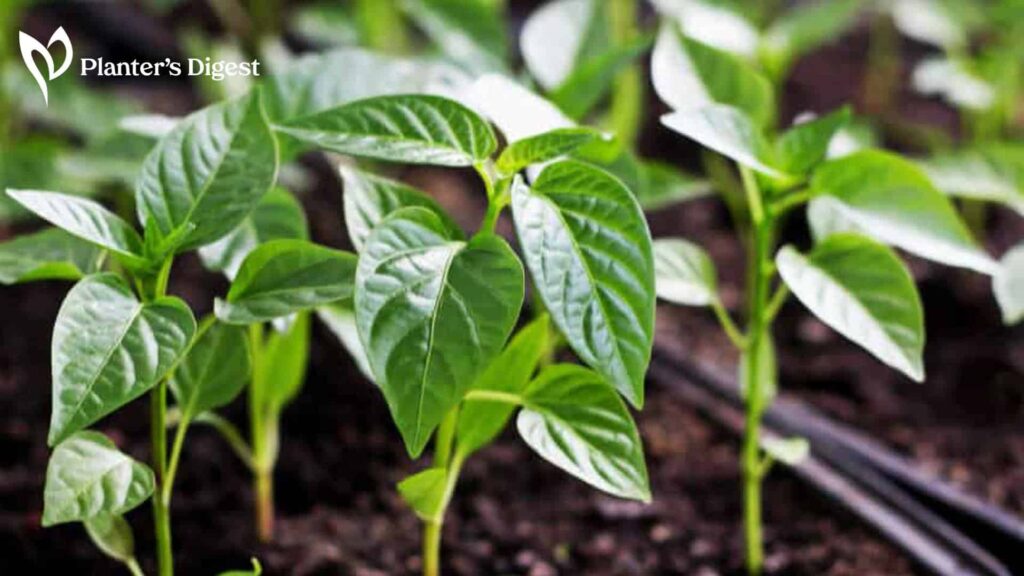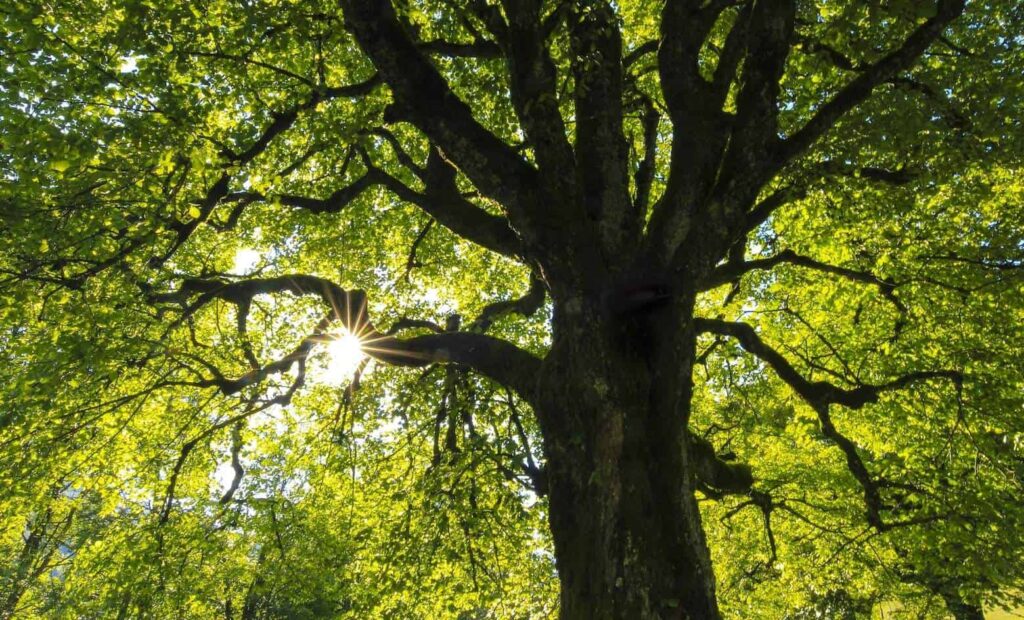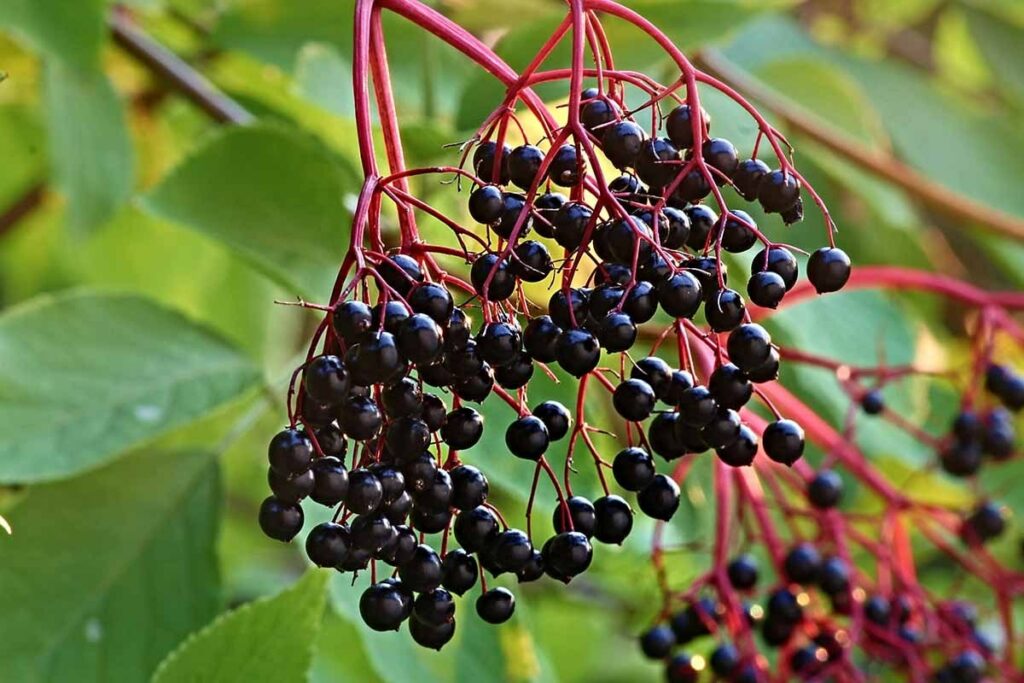Transplanting pepper seedlings is tricky because there are a ton of factors to take into consideration to ensure that you’re doing it the right way. Otherwise, you could risk your plant going into shock.
Don’t worry, though, as we’ve got the answers to all of your transplant questions right here! So it back, relax, and read on.
When is the best time to transplant my pepper seedlings?
The best time to transplant your pepper seedlings is 3 to 4 weeks after they’ve germinated. At this point, they should be at least 5 inches tall and have grown their third set of true leaves.
Your pepper seedlings must also have developed a root system already. If not, give them a week or two before transplanting.
Planter’s Tip:
If you’re not sure whether your pepper seedling has strong enough roots to withstand transplanting, you can gently loosen the soil to check whether a root ball has formed.
You should be able to see a sturdy root ball with white roots that reach the very bottom of their container.
How do I transplant my pepper seedlings?
While the process of transplanting is pretty straightforward, it can be a daunting task for even the most seasoned gardener. If not done properly, your plant could have trouble bouncing back from the stress.
Luckily for you, we’ve listed a step-by-step guide on how to transplant your seeds with ease.
1. Inspect whether your pepper plant has a well-developed root system ready for transplanting
One of the first things that you want to inspect is how big your seedling is. After about 4 weeks they should be at least 6 to 8 inches tall and have a couple of true leaf sets.
If your pepper plant tree seems a bit too short or doesn’t have many true leaf sets yet, you can leave it to grow for another week or two.
Aside from that, they should have white roots that extend all the way to the bottom of the container. If they’re not white, it means that they aren’t properly grown yet.
2. Start hardening off your seedlings a few weeks before transplanting
| Difficulty | Very Easy ●○○○○ |
| Speed | Slow |
The idea behind hardening off plants is to give them enough time to acclimate to the temperature and weather conditions outdoors.
This will increase their chances of being able to adapt once moved permanently. Along with this, they’ll get more accustomed to irregular weather such as rain and hot sunlight.
You’ll want to harden off your pepper plants at least two weeks before you plan to transplant them.
How To Do
1. To start the acclimation process, begin by putting your pepper seedling in the shade for about 2 hours.
This will help it get used to the weather outdoors without getting too overwhelmed by direct sunlight.
Once time has elapsed, bring your seedling back indoors and repeat for the next few days.
2. After a week or two, increase the sun exposure by giving your pepper seedling about 10 to 20 minutes of direct sunlight.
You’ll want to do this in the morning when the rays of the sun aren’t as hot as in the afternoon.
If you notice drooping leaves or sunscald, you may want to reduce the amount of time your pepper plant is spending under the direct sun along with adjusting the sun time.
3. Gradually increase the amount of direct sunlight your pepper seedling is getting.
You’ll also want to keep an eye on the temperature, steering clear of temperatures more than 95°F/-15°C or less than 55°F/12°C.
4. After 2 weeks, leave your plant outside overnight.
5. You can leave your pepper plant outside for good after 2 to 4 weeks of hardening off. By this time, it should have acclimated successfully to the outdoors.
3. Prepare the soil of their new container
| Difficulty | Very Easy ●○○○○ |
| Speed | Fast |
| Things You Need | • New container • Potting mix • Rake |
Prepare the soil of the new container where you’ll be transplanting your pepper plant by mixing in high-quality potting soil along with an equal portion of well-rotted compost.
Don’t forget to make certain that its new pot has adequate drainage or else you could be unknowingly setting your pepper plant up for failure.
Aside from that, monitor the soil temperature, ensuring that it’s at least 70°F/21°C during the day and 55°F/12°C at night.
If your soil is too cold, it’s likely that the roots of your pepper plant won’t be able to develop properly since it’s a warm-season crop.
Planter’s Tip:
To help warm up your soil, you can add row covers to act as a physical barrier against the cold winds. Aside from that, you can also layer mulch to act as a blanket and regulate temperatures.
In addition to these, rake through your soil to make it loose enough for soil growth. Otherwise, compacted soil could prevent root penetration and can cause your pepper plant to be rootbound.
4. Gently relocate your seedling from its old pot
| Difficulty | Very Easy ●○○○○ |
| Speed | Fast |
| Things You Need | • Chopsticks • Potting mix |
Now that your pepper plant and new pot are ready, it’s time for the big move! Using your hands, gently massage its current container to get the soil loose.
If you can, you can gently remove some soil with your fingers and use a chopstick to carefully puncture the soil and break it up.
In your new pot, add your potting mix until the pot’s about 75% full. Then, create a deep hole enough to fit your pepper seedling and its roots.
Position your seedling deep enough so that its first set of true leaves are underneath the soil. Afterward, fill in the hole with soil and lightly pat down to help it compact a bit.
5. Help your seedling settle in by giving it a good water
| Difficulty | Very Easy ●○○○○ |
| Speed | Fast |
| Things You Need | Water |
After transplanting, deeply water so that the soil compresses and is making direct contact with your pepper seedling’s roots. Helping the soil settle onto the roots aids better nutrient absorption, ultimately boosting root health.
Having moist soil right upon transplanting also helps promote root growth because it encourages the roots to absorb the water.
It’s also important to highlight that your root ball must remain moist to prevent drying out and getting damaged from transplant shock. Watering right away minimizes the chances of transplant shock because of consistent hydration levels.
If your soil’s too dry, it’ll have no choice but to take moisture from the roots of your plant, causing dehydration.
5. Move your seedling to a spot that gets at least 6 to 8 hours of sunlight each day
| Difficulty | Very Easy ●○○○○ |
| Speed | Fast |
| Things You Need | Sunlight |
Now that your seedling has settled into its new home, the last thing on the list is to relocate it to a sunny spot, one that preferably gets at least 6 to 8 hours of light daily.
Depending on where you’re from, the amount of sunlight your pepper plant will need will depend on how hot your climate is. Thus, it’s important to pay attention to how well your plant is responding to the sun exposure.
If your plant appears to be wilting, it could mean that the sunlight is too hot or too much. In this case, we suggest providing shade or simply relocating the plant again.
What is transplant shock?
Transplant shock is the stress that a plant experiences after being moved from one location to another. This can be caused by root damage, dehydration, nutrient imbalances, and sudden environmental changes.
While transplant shock is completely normal, it can be avoided if you move your plant correctly. This includes ensuring that it’s been gently removed and its roots are intact without any damage.
Transplant shock can also be avoided by slowly exposing your plant to its new environment before actually transplanting. This way, it has already successfully acclimated, reducing the likelihood of trauma.
How do I fix transplant shock?
To help your plant recover from transplant shock, ensure that it’s adequately watered and given enough shade. Add a layer of mulch to help regulate soil temperature and conserve moisture.
Aside from that, avoid fertilizing your plant too soon. In short, avoid doing too much or little of anything to avoid overstimulating your plant.
Essentially, you’ll want to give your plant time to recover in a conducive environment. With proper care, most plants recover well and will continue to establish a healthy root system in time.
FAQs
If you’ve got rootbound pepper seedlings, you can still transplant them as long as you gently untangle their roots before moving them into a new container. You can gently tease the roots manually with your hands.
Pepper plants can transplant relatively well as long as there isn’t significant damage to its roots. Thus, you’ll want to be careful when handling.
You can’t transplant your pepper plants any time because they’re warm-season crops, which means that they don’t handle the cold well.
Instead, you’ll want to wait until the threat of frost has passed before you begin hardening them off and transplanting.
While you can, it isn’t recommended to do so because it’s easy to overwater your plants in such a large container.
Having little roots also means that your pepper plant won’t be able to absorb all the water in the soil, which could cause standing water that could lead to diseases.
Thus, many opt to simply transplant after a couple of weeks.





